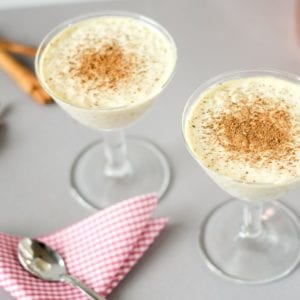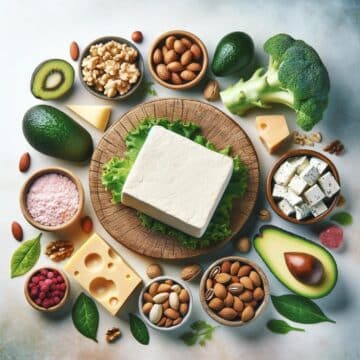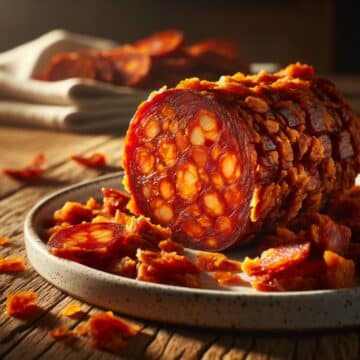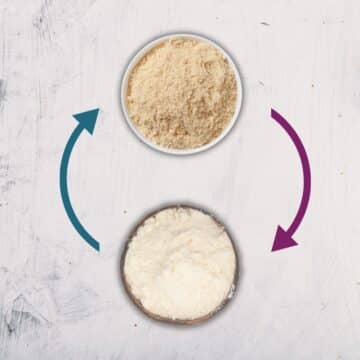Been on keto for a while? Then you’ve probably heard of shirataki (or miracle) noodles — those almost translucent noodles featured in so many keto recipes.
Well, this unusual-looking pasta is made from something called konjac flour, an ingredient you should definitely consider trying if you already haven’t.
Konjac flour has been an Asian culinary staple for thousands of years, but it is only in recent years that it’s become recognized in other parts of the world.
It’s now used as a dietary fiber for constipation as well as for weight loss, diabetes control, and so much more. Being practically devoid of digestible carbs, it’s unsurprisingly a popular ingredient in keto cooking.
Here is more on what konjac flour is and why it’s worthy of your attention.
What Is Konjac Flour?
Konjac flour is a fine powder made by grinding down the dried roots of the konjac plant. Konjac is a perennial plant native to Southeast Asia, also known as konjaku, voodoo lily, and elephant yam, among many other names.
Interestingly, konjac roots (called corms) are at least 45% glucomannan, a type of water-soluble fiber. Foods this high in fiber are rare and have unique properties not just in terms of health benefits but also as culinary ingredients (more on that later).
Konjac roots also contain a little bit of protein and several important minerals, like iron, zinc, manganese, and copper [1].
As far as konjac flour nutrition specifically goes, it is almost 80% glucomannan [1]. The rest of it contains trace amounts of protein, fat, and minerals. This makes it almost a zero-calorie and zero-carb food.
In its purified form, konjac flour is known as glucomannan powder. You may have heard about it since it’s also popular in the world of keto. Some brands of shirataki noodles are also made with glucomannan only.


Why Use Konjac Flour on Keto
We’ve already said konjac flour is a zero-carb food, which is reason enough to add it to your keto meal plan.
Another reason is that it’s a high-fiber ingredient, and fiber is something keto eaters often struggle to get enough of due to the low-carb nature of this diet.
Konjac flour can also replace starch and other thickeners in your keto recipes. It can even add a beautiful, soft texture to your baked goods.
Konjac products have a jelly-like consistency due to the absorptive properties of glucomannan fiber. Shirataki noodles, for example, are 97% water and only 3% glucomannan, which just showcases how much water this fiber can take in.
This property of konjac is why konjac flour can be a fantastic replacement for cornstarch in, say, keto pudding or brownies. It’s also a great vegan substitute for gelatine.
Konjac flour and products made from it can be found in health food stores. Amazon is another place to look, as are many other online stores.
The Health Benefits
Konjac flour makes keto baking and dessert making easier — that, we know. But did you know that it also comes with added health benefits? Here are a couple of those benefits explained.
Better glycemic control
All low-carb, high-fiber foods can help you keep your blood sugar levels in check on keto — something you need to enter and stay in ketosis. And konjac flour is no exception, according to an old randomized control trial that found that glucomannan (the main ingredient in konjac flour) aids in glycemic control in high-risk diabetic patients [2].
Weight loss
Many people who go keto do so to lose weight, and konjac flour can help in this respect. The water-soluble konjac flour fiber provides a feeling of fullness while not adding to your daily calorie count. However, note that glucomannan alone does not promote significant weight loss, according to one meta-analysis of clinical trials published in 2014 [3].
Constipation
Constipation is a common problem on keto, and konjac flour may help. It’s a natural laxative, with studies showing that it is highly effective in relieving constipation by increasing stool bulk and improving gut flora [4].
Better skin
Many soluble fibers function as prebiotics, compounds that increase the number and activity of good gut bacteria. Prebiotics were found to help against acne, and glucomannan in konjac flour has done just that in 26 female volunteers in one clinical trial published in 2013 [5].
And while adding konjac flour to your keto diet may help you reap some of these benefits, bear in mind that more is NOT better in this case.
Being so high in fiber that it is a scientifically confirmed natural laxative, you want to keep your intake moderate.
There’s no defined upper limit for glucomannan as of yet, but studies show that up to 10g per day is a safe dose [6]. Go beyond that, and you could experience stomach upset.
References:
- Konjak Foods website. BENEFITS AND NUTRITIONAL INFORMATION ABOUT KONJAC. Accessed Aug 2021. http://www.konjacfoods.com/health/index.html
- Vuksan V, Jenkins DJ, Spadafora P, et al. Konjac-mannan (glucomannan) improves glycemia and other associated risk factors for coronary heart disease in type 2 diabetes. A randomized controlled metabolic trial. Diabetes Care. 1999;22(6):913-919. doi:10.2337/diacare.22.6.913
- Onakpoya I, Posadzki P, Ernst E. The efficacy of glucomannan supplementation in overweight and obesity: a systematic review and meta-analysis of randomized clinical trials. J Am Coll Nutr. 2014;33(1):70-78. doi:10.1080/07315724.2014.870013
- Chen HL, Cheng HC, Liu YJ, Liu SY, Wu WT. Konjac acts as a natural laxative by increasing stool bulk and improving colonic ecology in healthy adults. Nutrition. 2006;22(11-12):1112-1119. doi:10.1016/j.nut.2006.08.009
- The Use of Konjac Glucomannan Hydrolysates (GMH) to Improve the Health of the Skin and Reduce Acne Vulgaris. American Journal of Dermatology and Venereology. 2013; 2(2): 10-14
doi:10.5923/j.ajdv.20130202.02 - Keithley JK, Swanson B, Mikolaitis SL, et al. Safety and efficacy of glucomannan for weight loss in overweight and moderately obese adults. J Obes. 2013;2013:610908. doi:10.1155/2013/610908










Judy Miller says
Can this flour be used to make pasta?
Luka says
Thank you for your comment and for reading our article about konjac flour. While we have not personally tried using konjac flour to make pasta, it is possible to do so.
Konjac flour has a unique texture that may work well for certain types of pasta, such as shirataki noodles. However, we recommend experimenting with small batches of dough to find the right consistency and cooking time.
As with any new recipe, it may take some trial and error to find the right technique and ingredients to achieve the desired results. We encourage you to give it a try and let us know how it works out for you!
Thanks again for your comment and happy cooking!
Jeremy says
Do you know any konjac-based flourless cheese sauce recipes?
Tisa says
Not yet. 🙂
Judith Major says
Using konjac products, my discovery to rinse with vinegar eliminates the odour. I am thrilled to find you. You give me a piece of helpful information about konjac. Also, using Locust Bean Gum makes things silkier. Again in a tiny portion.
Tisa says
Great, thank you, Judith, the information you've provided might come quite useful to everybody.
Michelle Ross says
Can you recommend a brand of konjac flour?
Tisa says
Not really, unfortunately. We've bought what we can get in Asian stores.